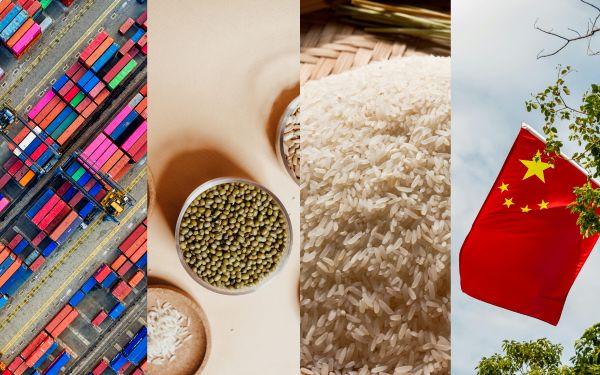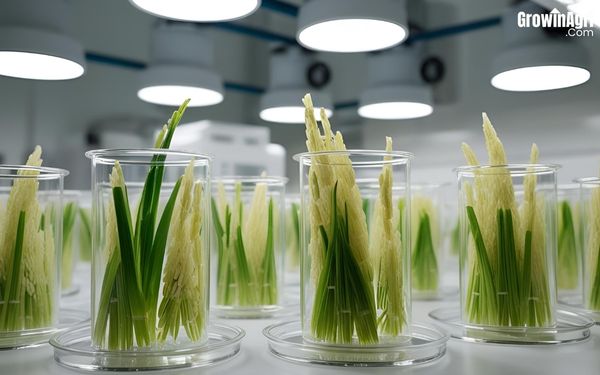1. China Reaffirms Food Security at 16th International Agri-Trade Policy Conference
Beijing hosted the 16th International Agricultural Trade Policy Conference on July 15, bringing together leaders from the WTO, FAO, and various international diplomats. Vice Minister Zhang Zhili reiterated China’s commitment to bolstering food security through a dual strategy of robust domestic production and moderate imports. Amid rising global protectionism, geopolitical conflicts, and climate change, the conference underscored the importance of multilateral collaboration, resilient supply chains, and advancing green transformation in agriculture. The 2025 China Agro-Trade Report was also released, setting a strategic path for China’s engagement in global agriculture.
2. India Set to Boost Global Pulse Production by 8 Million Tonnes by 2034
India is projected to contribute an additional 8 million tonnes of pulses to global output by 2034. This forecast from the OECD-FAO Outlook attributes growth to:
- Hybrid seed adoption
- Enhanced mechanization
- Supportive policies for farmers
- Wider intercropping practices by smallholders
Per capita pulse consumption in India is set to reach 8.6kg annually by 2034, promising improved nutrition and increased farmer incomes. India’s leadership solidifies Asia’s pivotal role in meeting the world’s rising pulse demand.

3. Kharif Sowing Momentum: 708 Lakh Hectares Surpassed, Cotton Down
As of July 18, 2025, India’s Kharif sowing covered 708.31 lakh hectares, up nearly 28 lakh hectares year-on-year. Key highlights:
- Rice: Registered the highest growth, up by 19.47 lakh hectares.
- Coarse Cereals & Pulses: Expanded significantly.
- Cotton: Acreage declined by 3 lakh hectares, attributed to market price volatility and delayed monsoons.
- Soybean: Area fell, but groundnut and bajra recorded gains.
Despite setbacks in cotton and oilseeds, India’s overall Kharif season displays solid momentum.
4. Chhattisgarh Acts Against Fertilizer and Seed Black Marketing
Cracking down on black marketing, Chhattisgarh authorities conducted surprise raids in Bilaspur district:
- Notices issued to three dealers for unauthorized sales and billing irregularities.
- One license suspended for 15 days over non-compliance.
- Warehouses sealed and sales banned for regulatory violations.
A mandatory POS (Point-of-Sale) system for all fertilizer transactions is now enforced, protecting farmers from adulteration and unfair practices.
5. Google Unveils AMED AI Tool for Indian Farmers
Google, in partnership with IIT Kharagpur under the Amplify Initiative, introduced AMED API—an AI-driven tool designed to help Indian farmers:
- Monitor crops and farmland in real time using satellite imagery and machine learning.
- Identify crops, measure fields, and detect sowing/harvest dates.
While initial adoption is slow due to income constraints and fragmented landholdings, the tool aims to boost productivity and resilience for Indian farmers. Notably, it also supports India’s linguistic and cultural diversity through tailored AI datasets.
6. Bihar Announces ₹50,000 per Hectare Fruit Cultivation Subsidy
The Bihar government has launched a new subsidy—₹50,000 per hectare—to promote commercial fruit farming (guava, amla, apple ber, lemon) under its Crop Diversification Programme. Key features:
- Covers 50% of the ₹1 lakh cultivation cost, split into two installments.
- Available for up to 4 hectares per eligible farmer.
- Online, first-come-first-served application to ensure transparency.
This scheme aims to increase farmer incomes and promote climate-resilient, high-return horticulture.
7. Gujarat Mango Exports Surge, Gir Kesar in Spotlight
Gujarat has exported 3,000 tons of mangoes in the last five years, with a record 29% shipped in 2024-25 alone. The famed Gir Kesar mango, protected by GI tag, is seeing heightened global demand—especially in the US and South Africa. Other highlights:
- Mango production climbed 21% from 2021-22 to 2023-24.
- Cultivation area increased by 8.4%.
- Amreli district led with 8.16 tons/hectare productivity.
- An irradiation facility in Bavla improved export quality, treating 805 tons of mangoes since 2019.







